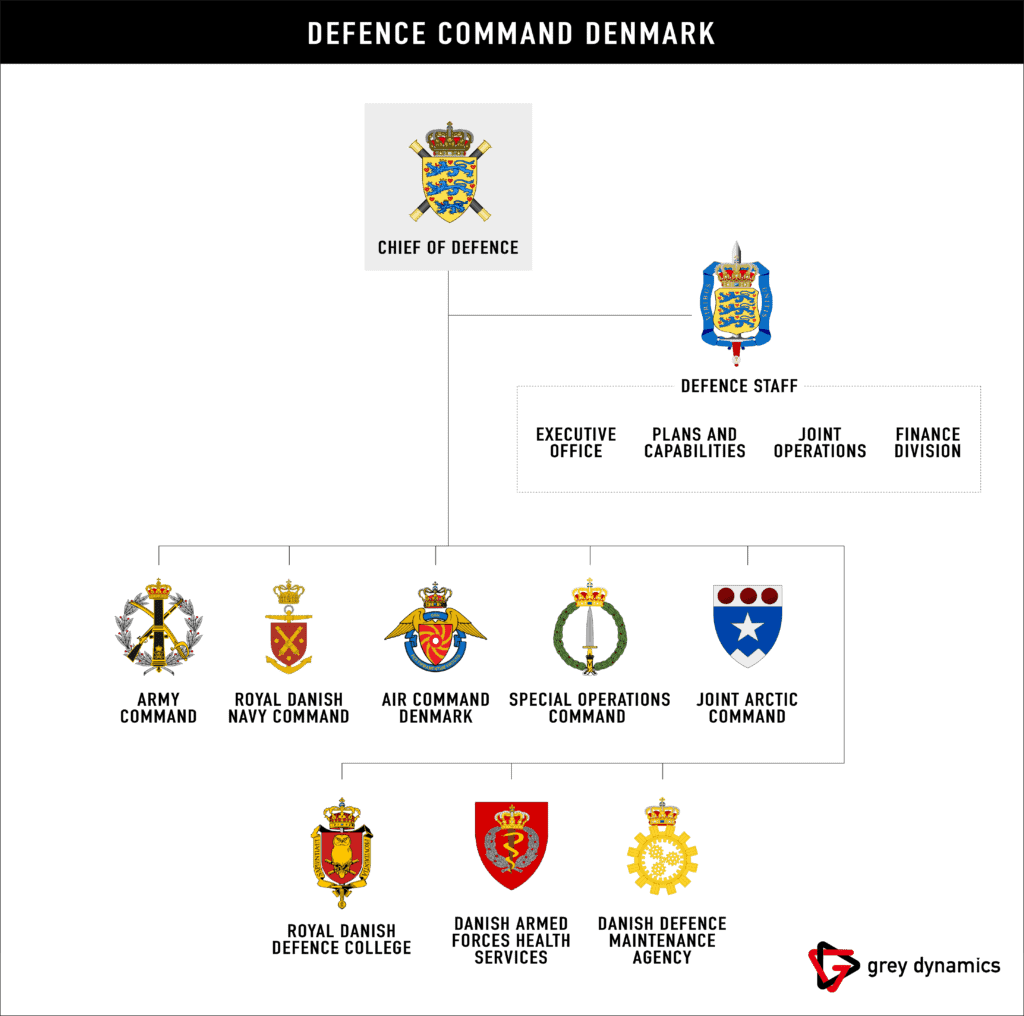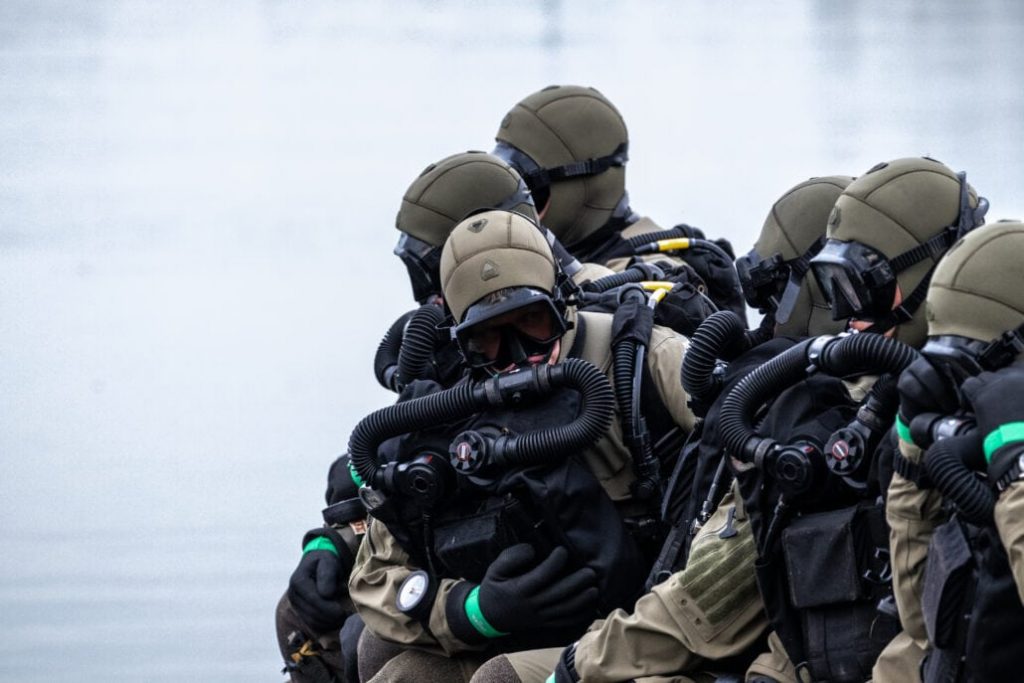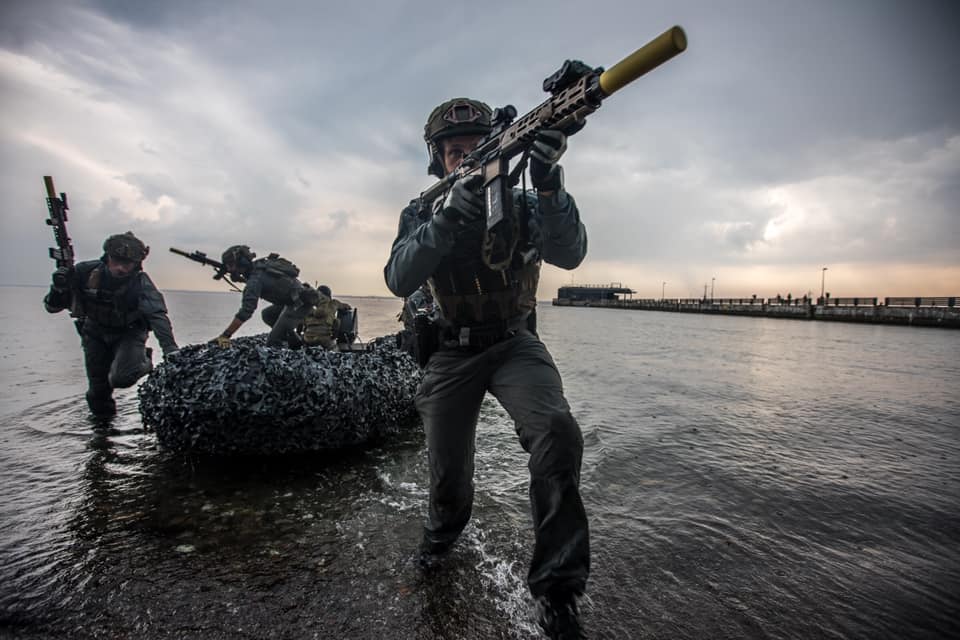Danish Combat Divers: Special Maritime Operators Denmark

The Danish Combat Diver Corps (Danish: Frømandskorpset - FKP) is a special forces unit of the Danish Defense Command. Based in Kongsøre, the unit focuses on special maritime operations. However, the unit also undertakes airborne and ground operations as required.
The unit is strongly motivated by its primary objective of special maritime reconnaissance ( source ). As part of this mission, the unit prides itself on "strong professional dedication, loyalty and open-mindedness" ( source ). Interviews with divers show that the unit prides itself on its "innovative, deliberative and non-hierarchical culture where teams strive to maximize operational efficiency" ( source ).
1. History
The Royal Navy created the Frogmen in 1957, initially inspired by the British Special Boat Service ( source ). Originally the unit was part of the Navy Diving School, but later reported directly to the Chief of Navy Operational Command.
In the early years of the unit, it established itself as a formidable force. The unit quickly gained a reputation for its advanced reconnaissance skills, which proved incredibly useful during the Cold War. Meanwhile, combat divers regularly carried out intelligence gathering duties to support the wider Danish defense effort ( source ).

The Royal Navy approved the unit emblem on 19 April 1982. The emblem depicts a knife carried by Frogmen Corps ( source ).
2. Organization
The divers sit under the Special Operations Command (SOK) of the Danish Defense Command. The divers were transferred to SOK command in 2015, having been a unit of the Royal Navy.

3. Tactics, Techniques and Procedures (TTP)
3.1. Selection
Prospective divers must go through a grueling screening process and undergo initial training before being indoctrinated into the unit's ranks.
As part of the initial training, which lasts ten months, the candidates carry out numerous underwater training courses. This is to prepare future divers for the special tasks of reconnaissance and underwater combat common to divers ( source ). This training includes long term oxygen diving, deep water diving and weight diving. During the process, applicants may be excluded from the program if they do not meet the standards required of a Danish scuba diver. Training includes, but is not limited to ( source ):
- Orienteering
- military communication
- Close Combat Skills
- Combat swim and dive
- Patrolling
As a result of such rigorous selection and training, it is exceptionally difficult to become a combat diver. Up to 600 military personnel apply to become divers each year, however, there have only been a total of 400 applicants selected to be divers in the unit's history ( source ). This therefore makes the Danish Diving Corps one of the most selective and elite special operations forces in the world.
At the end of 2021, the Danish Defense Command announced that it would not organize the selection and training course for new divers in 2022. SOK leader Major General Peter Boysen said the force had already fulfilled its recruiting requirement for the year. due to internal hiring ( source ).

3.2. Coaching
Divers undergo extensive ongoing training once they are selected to join the force. This training aims to develop and maintain the diving standards required by divers. Similarly, additional training is provided to enable divers to further specialize in specific functions, such as sniping or communications ( source ).
4. Equipment
Standard equipment is consistent across all Danish Special Forces units ( source ). This may include:
- Diemaco C7 OR C8
- HK USP
- Hong Kong MP5
- Hong Kong G3/G41
- Remington 870
- Benelli M1014
- SR-25 Knight Armament
- Sako TRG-42
However, due to their specialized marine operations, divers also have access to the KH P11, a specialized underwater gun, which has a range of up to 15 meters.

5. Notable Transactions
Due to the covert nature of the unit's operations, there is little publicly available information about the unit's exact missions. Much of the unit's work takes place domestically, due to Denmark's 4,500 miles of coastline. However, divers also undertake a large amount of international work ( source ):
5.1. Iraq
Danish divers were deployed as part of Combined Joint Task Force 7, a US military formation formed in 2003 as part of the war on terror. As part of this deployment, the divers were part of a training force that helped maintain order and train local security forces ( source ). The divers would later use this training experience to train the Kenya Defense Force in maritime defence.
5.2. Afghanistan
Danish divers have been deployed to Afghanistan as part of the Allied Task Force K-Bar - a coalition of several special forces made up of nearly 3,000 international soldiers. The force operated from October 2001 to April 2002, with more than 75 missions in the region ( source ). The divers served alongside the Jaeger Corps in the region ( source ).
5.3 Syria
The divers, along with members of the Jaeger Corps, deployed to Syria in 2017. The force, made up of 60 members from both special operations units, was one of the largest special operations deployments in the Danish military history ( source ).
5.4 Modern operations
More recently, at the end of 2021, divers deployed off the West African coast managed to infiltrate a pirate ship. Thanks to the highly trained operators, the unit was able to successfully apprehend the pirates with no casualties ( source ).
Denmark is a member of NATO and as such divers and the wider Danish Defense Command participate in international joint readiness exercises with other special operations forces. This includes Green Berets, Air Commandos and Navy SEALs ( source ).
6. Summary
Danish divers are a highly specialized and capable special operations unit, exceptionally skilled in maritime operations. As a result of the unit's contributions to operations in Afghanistan, the divers were awarded the Presidential Unit Citation.
0 comments